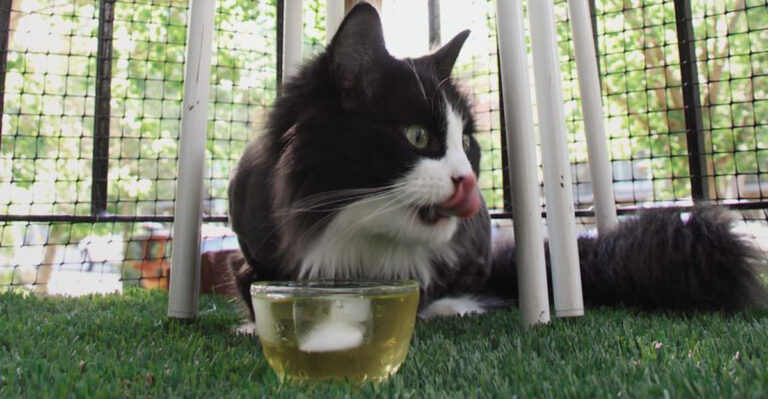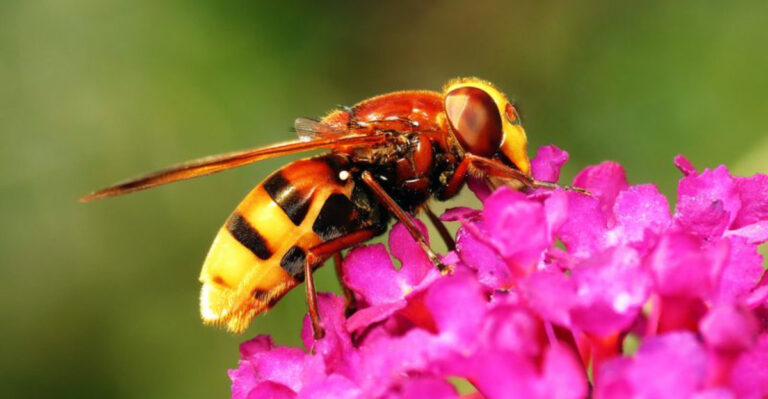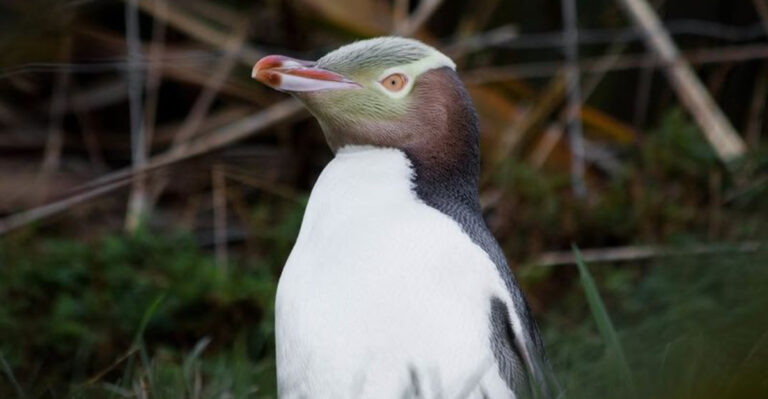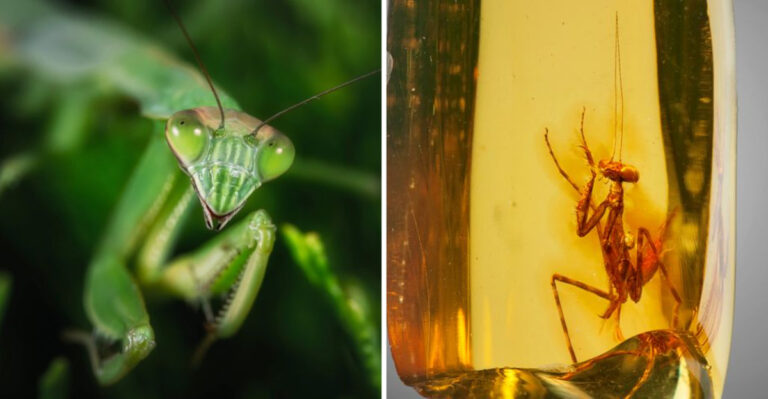Hawaii Ancient Green Sea Turtle Still Thrives In Island Waters
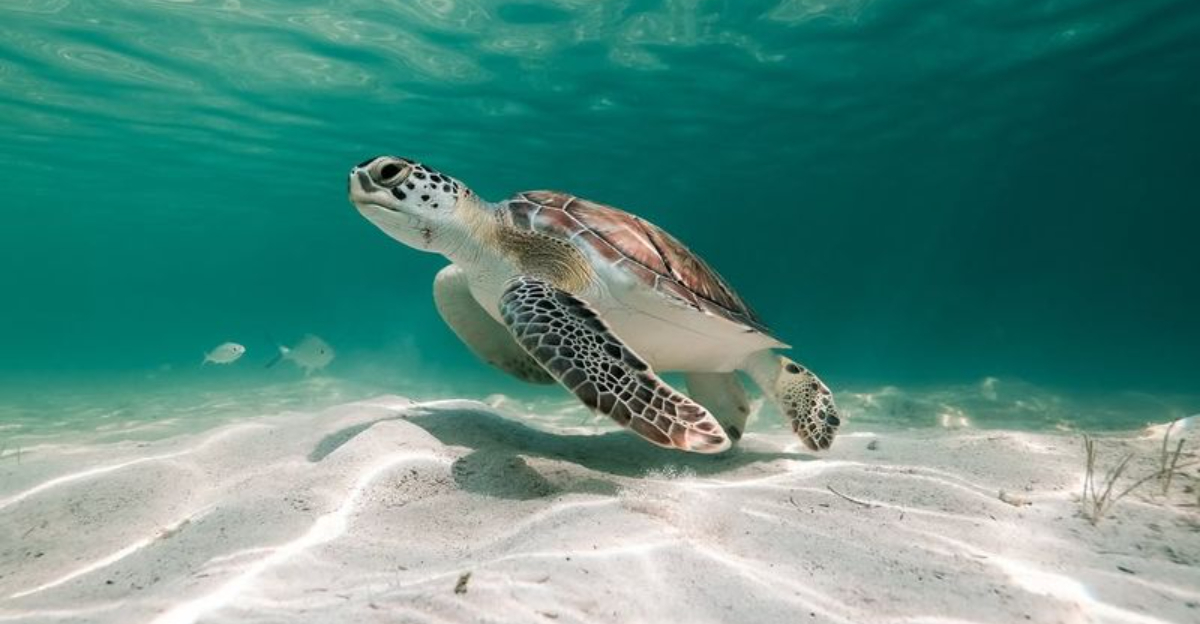
The Hawaiian Green Sea Turtle, a species with ancient roots, continues to thrive in the warm waters surrounding the Hawaiian Islands.
Known for their long lifespan and remarkable migration patterns, these turtles have been a part of Hawaii’s marine ecosystem for centuries.
Despite facing numerous challenges over the years, including habitat loss and hunting pressures, the green sea turtle remains a symbol of resilience.
The Turtle’s Age-Old Heritage
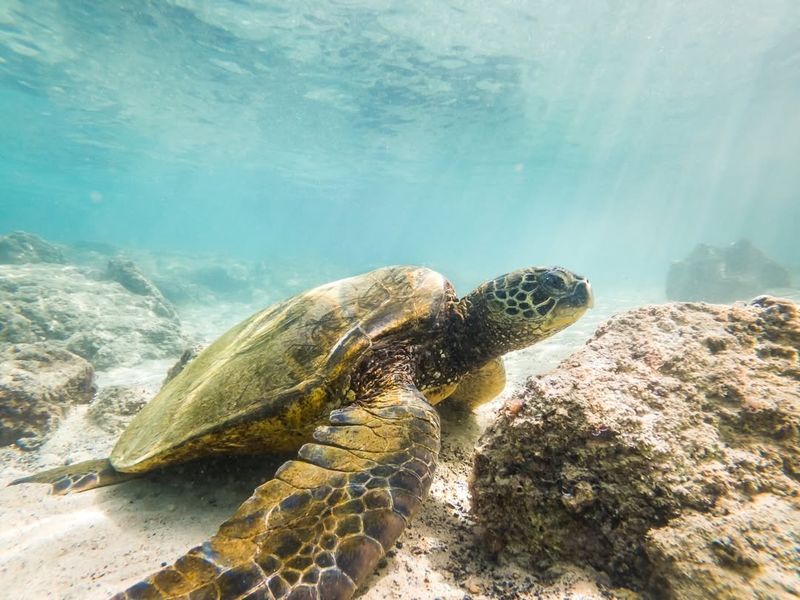
The ancient green sea turtle is a marvel of nature, having existed for over 110 million years. These turtles have witnessed the rise and fall of dinosaurs, adapting over millennia to survive in changing environments. Their resilience is remarkable, making them living relics of Earth’s distant past.
In Hawaii, they are known as “honu” and are integral to native folklore and traditions. Adorned with a smooth, olive-hued shell, these turtles are a symbol of longevity and endurance. Their presence continues to enchant both locals and visitors alike, drawing attention to conservation efforts.
Diet And Feeding Habits
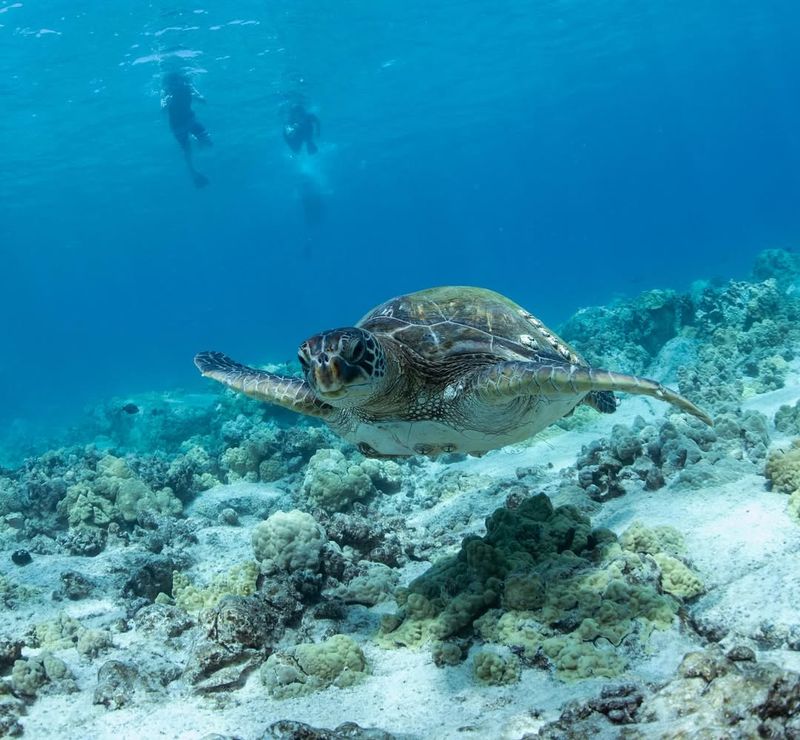
Green sea turtles are predominantly herbivorous, feeding mainly on seagrass and algae. This diet gives their fat a greenish tint, which ironically is how they got their name. As grazers of the ocean floor, they play a crucial role in maintaining the health of marine ecosystems.
Their feeding habits promote nutrient cycling, which benefits other marine life. These turtles can often be seen near coral reefs, where they find abundant food sources. Their gentle foraging helps keep the seagrass beds healthy, supporting biodiversity and protecting the ocean’s intricate balance.
Migration Patterns
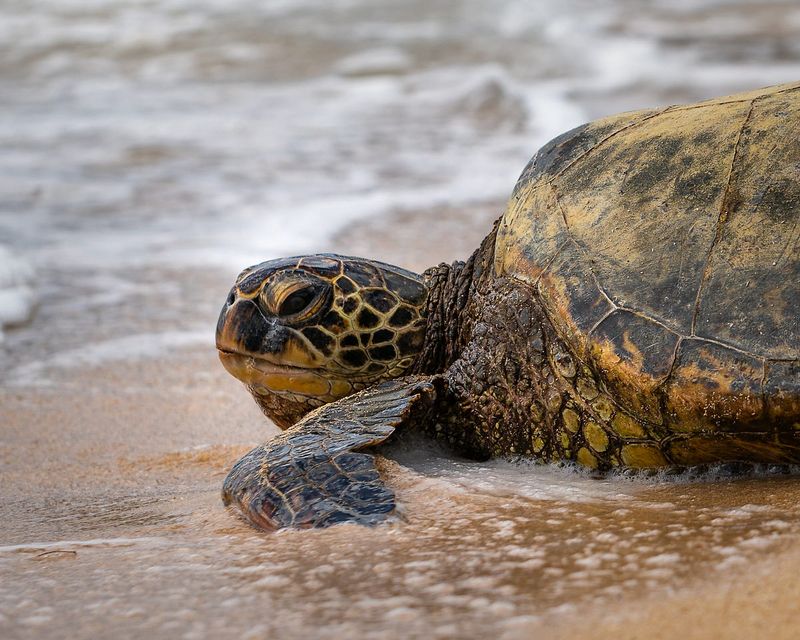
Green sea turtles are known for their incredible migratory journeys, traveling thousands of miles between feeding and nesting sites. They exhibit strong fidelity to their natal beaches, often returning to the same spot where they were born to lay eggs. This remarkable navigational ability remains a mystery to scientists.
Some believe they use the Earth’s magnetic fields to guide them. Their migration plays a vital role in the genetic diversity of turtle populations, ensuring the survival of the species. In Hawaii, these journeys are celebrated as a testament to the turtles’ perseverance and tenacity.
Nesting Behavior
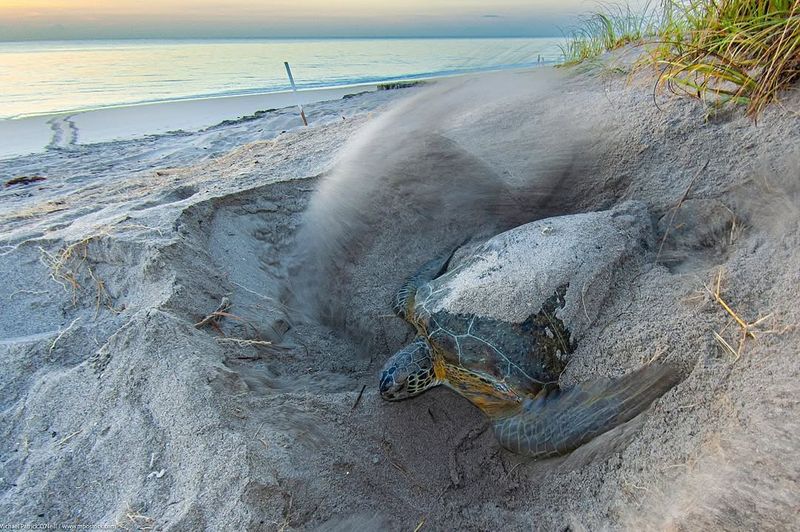
Female green sea turtles exhibit diligent nesting behavior, often during the night for added protection. After reaching maturity, which can take up to 30 years, they return to their birth beaches to lay eggs. Using their strong flippers, they dig deep nests in the sand to protect their precious eggs from predators and environmental hazards.
Each clutch can contain over a hundred eggs, which incubate for about two months. The temperature of the sand determines the sex of the hatchlings, an intriguing aspect of their reproduction. Their nesting rituals are a wondrous display of instinctual precision.
Hatchling Survival Challenges
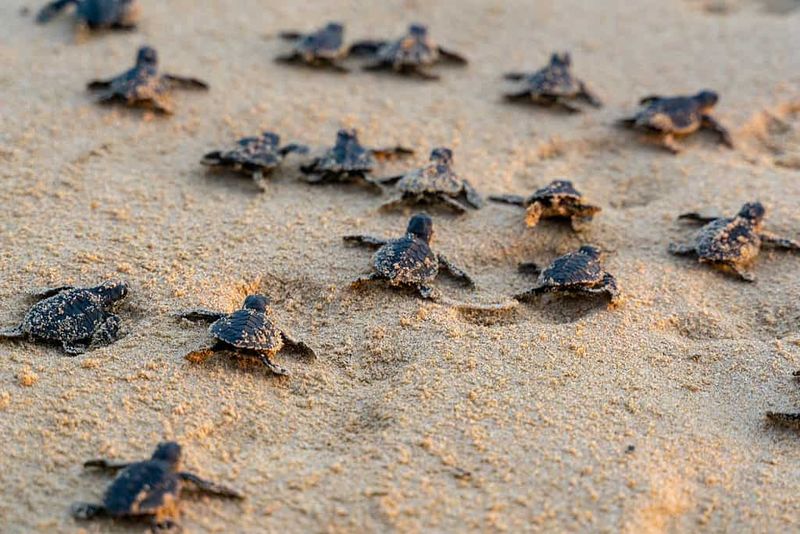
The journey from egg to ocean is perilous for green sea turtle hatchlings. Once they emerge, they face numerous challenges, including predators like birds and crabs. Only a small percentage survive to adulthood. Human activities have exacerbated these dangers, with beachfront development and artificial lighting disrupting their natural cues.
However, concerted conservation efforts aim to improve their chances. In Hawaii, volunteers often help guide hatchlings to the sea, ensuring they have a fighting chance. Watching these tiny turtles embark on their ocean adventure is both heartwarming and a reminder of nature’s fragility.
Role In Hawaiian Culture
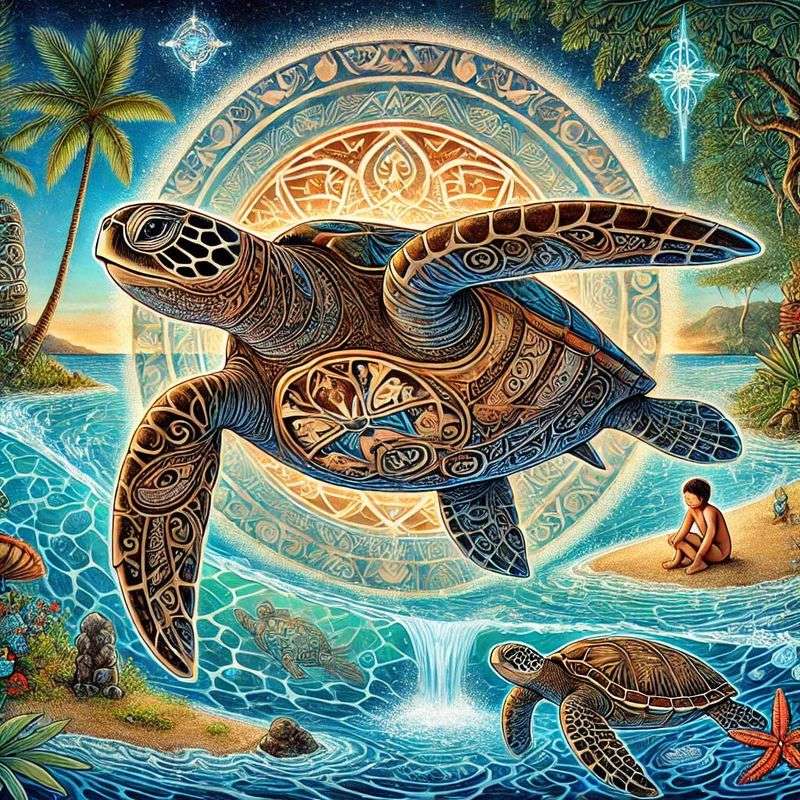
In Hawaiian culture, the green sea turtle, or “honu,” is revered as a symbol of good luck, endurance, and long life. They are considered a guardian spirit, or “aumakua,” to some families, embodying wisdom and guidance.
Tales of honu are woven into Hawaiian mythology, teaching lessons of respect and harmony with nature. The turtle’s graceful movements in the water symbolize the importance of going with the flow, an essential life lesson for many.
To protect this cultural icon, Hawaiians are deeply involved in conservation initiatives, ensuring future generations can also cherish the honu.
Conservation Status
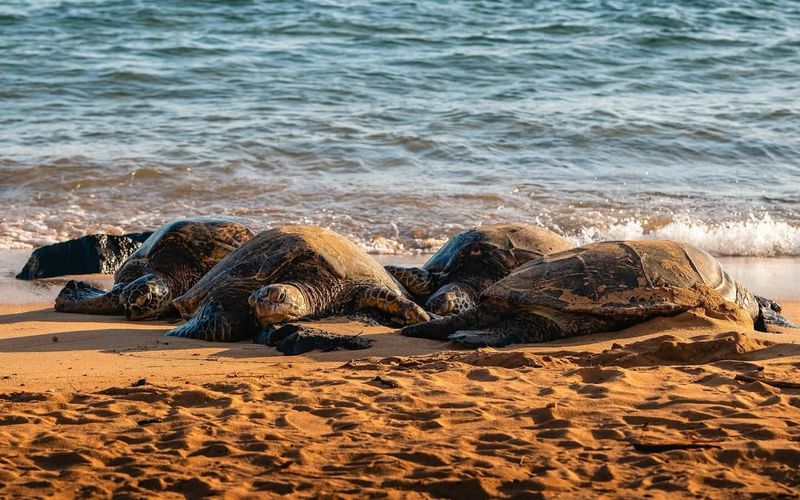
Despite their ancient lineage, green sea turtles face numerous threats today, leading to their classification as endangered. Human activities such as poaching, habitat destruction, and pollution have drastically reduced their numbers. Climate change exacerbates these issues, impacting nesting sites and food availability.
Conservationists globally are working tirelessly to protect these turtles, implementing measures like protected areas and stricter regulations. In Hawaii, public awareness campaigns and community engagement are crucial in these efforts. By safeguarding their habitats and reducing human impact, there’s hope for the green sea turtle’s future resurgence.
Unique Adaptations
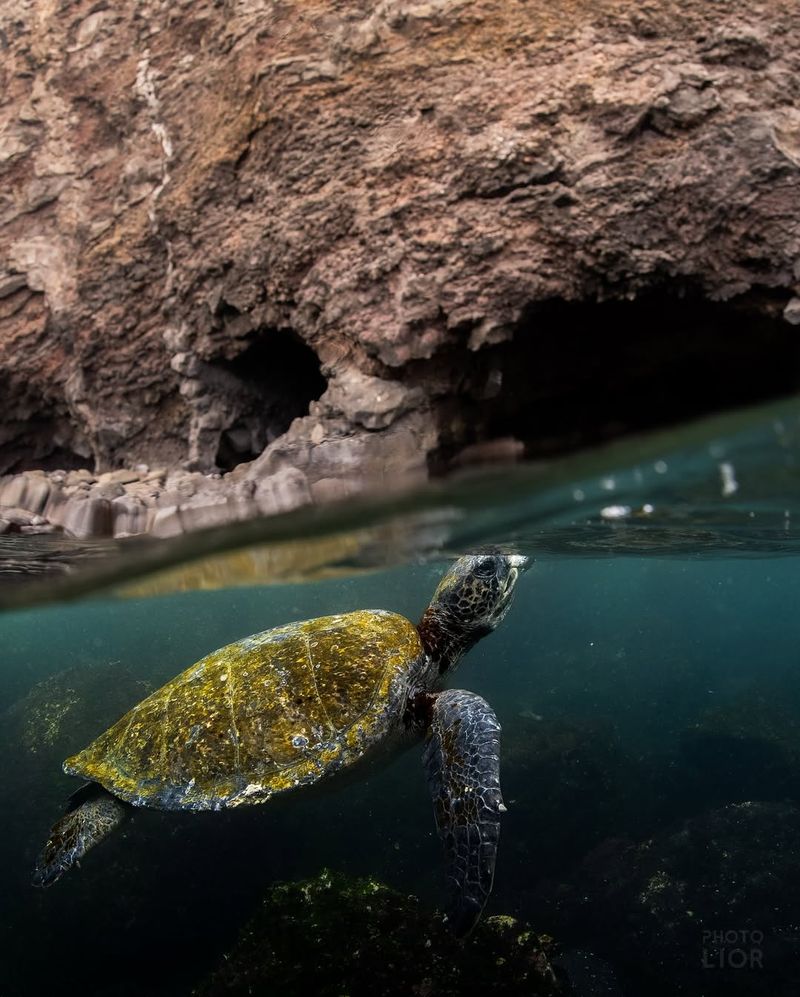
Green sea turtles have evolved unique adaptations to thrive in marine environments. Their streamlined shells and powerful flippers enable them to glide through water with minimal effort.
Unlike their land-dwelling relatives, these turtles extract oxygen efficiently, allowing them to stay submerged for long periods. Their large lungs help regulate buoyancy, crucial for their deep dives.
Another fascinating adaptation is their salt glands, which excrete excess salt from their diet. These evolutionary traits not only aid survival but also highlight the turtles’ incredible journey through Earth’s oceans, showcasing nature’s ingenuity in adaptation.
Threats From Plastic Pollution
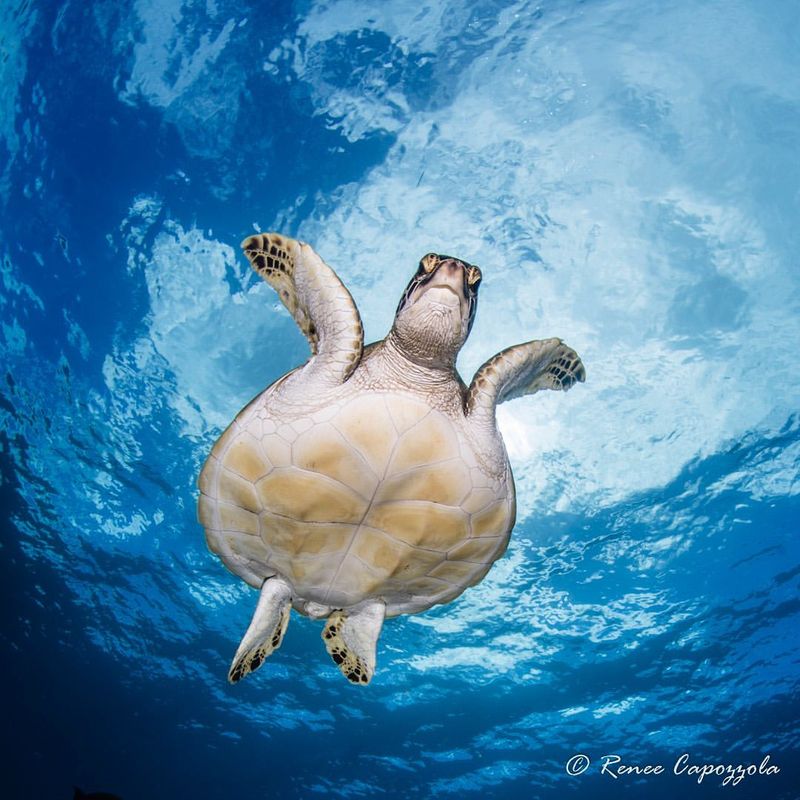
Plastic pollution poses a significant threat to green sea turtles, often mistaking debris for food. Ingesting plastic can lead to intestinal blockages, malnutrition, and even death. Entanglement in discarded fishing gear and plastic waste is another grave danger, causing injuries or impairing their ability to swim.
In Hawaii, efforts to combat plastic pollution include beach clean-ups and educational programs. By reducing plastic use and improving waste management, the risk to these turtles can be diminished. Public involvement is vital in this fight to ensure a cleaner, safer ocean for future generations of green sea turtles.
Longevity And Lifespan
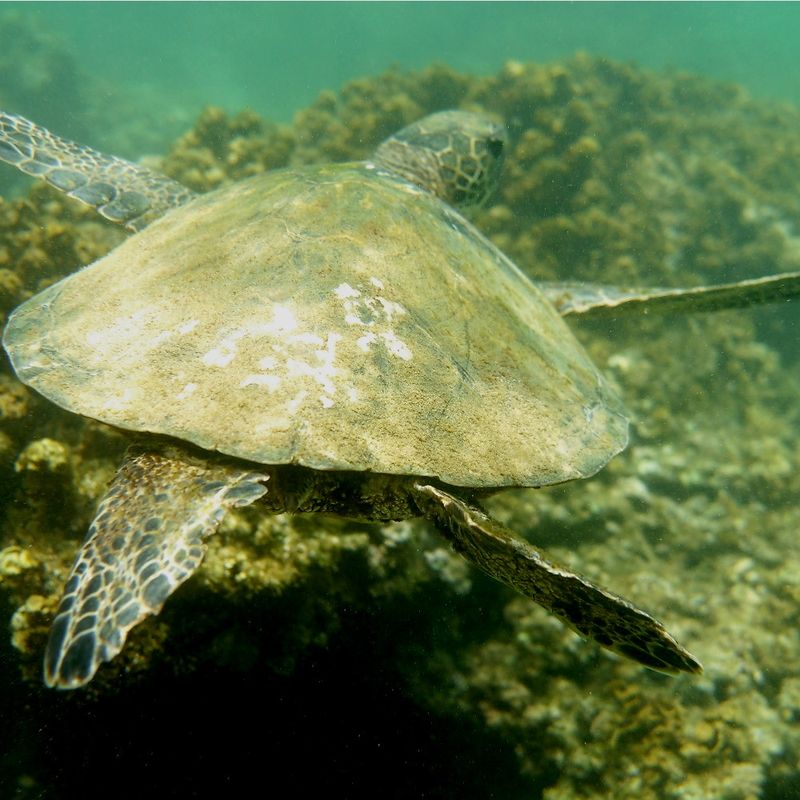
Green sea turtles boast impressive lifespans, often living to be 70 years or more. Their longevity is attributed to their slow growth rates and delayed maturity, which can take decades. This prolonged life cycle presents challenges in conservation, as threats impact multiple generations.
Despite these challenges, the turtles’ extended lifespan allows them to play a significant role in their ecosystems over many years.
In Hawaiian waters, observing these ancient creatures offers insight into the health of marine habitats. Protecting their long lives is essential for maintaining ecological balance and biodiversity in the oceans.
Turtle Watching And Eco-Tourism
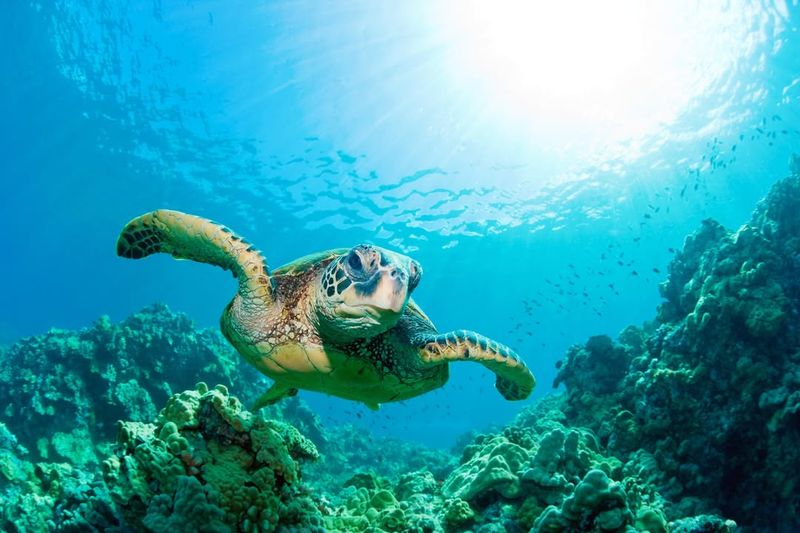
Turtle watching is a popular activity in Hawaii, where visitors can observe green sea turtles in their natural habitat. Eco-friendly tours emphasize respectful viewing, ensuring minimal disturbance to the turtles. This form of tourism supports local economies while promoting conservation awareness.
Tour guides often share insights into the turtles’ behaviors and the importance of protecting their environment.
By fostering a connection between visitors and these majestic creatures, eco-tourism encourages sustainable practices. Choosing responsible tours contributes to the conservation of Hawaii’s green sea turtles, allowing future visitors the opportunity to appreciate their beauty.
Scientific Research And Discoveries
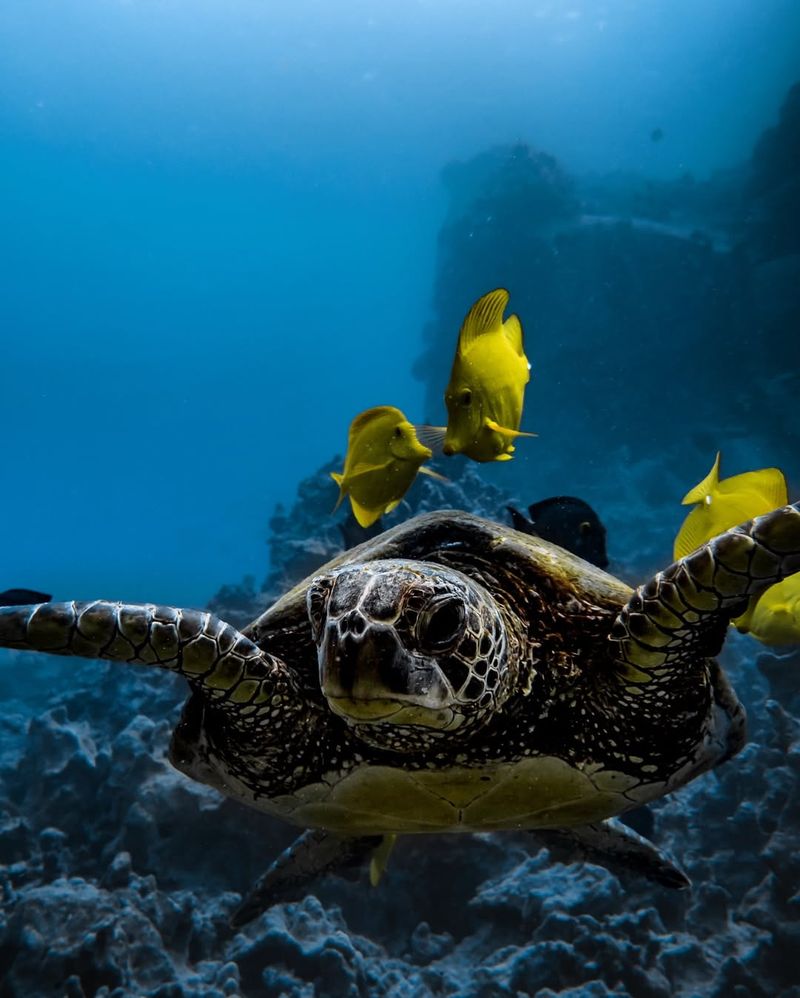
Ongoing scientific research is crucial in understanding and protecting green sea turtles. Studies on their genetics, migratory patterns, and habitat use provide valuable insights into their biology and ecology. Technological advances, such as satellite tracking, have revolutionized turtle research, revealing previously unknown aspects of their lives.
In Hawaii, collaboration between scientists, conservationists, and local communities enhances research efforts. This collective knowledge drives effective conservation strategies, promoting the recovery of turtle populations.
Each discovery not only aids in their protection but also enriches our understanding of marine science, offering hope for future generations.
Community Involvement In Conservation
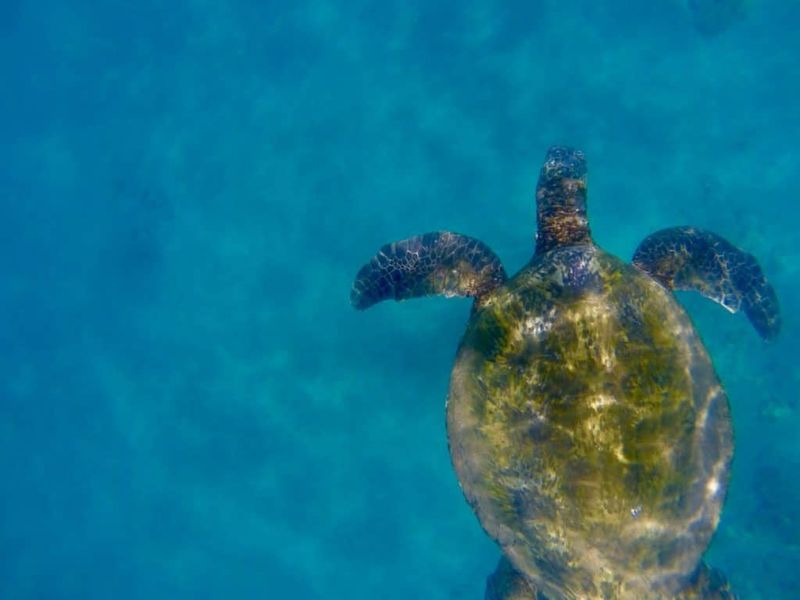
Community involvement is a cornerstone of green sea turtle conservation in Hawaii. Local residents, schools, and organizations actively participate in initiatives like beach clean-ups and public education campaigns. These efforts foster a sense of responsibility and stewardship for the turtles’ well-being.
By engaging the community, conservation programs have a greater impact, reaching diverse audiences and inspiring action.
The collective work of individuals and groups helps protect nesting sites, reduce pollution, and support research. This united approach not only benefits the turtles but also strengthens the community’s connection to their natural heritage.
The Turtle’s Underwater Dance
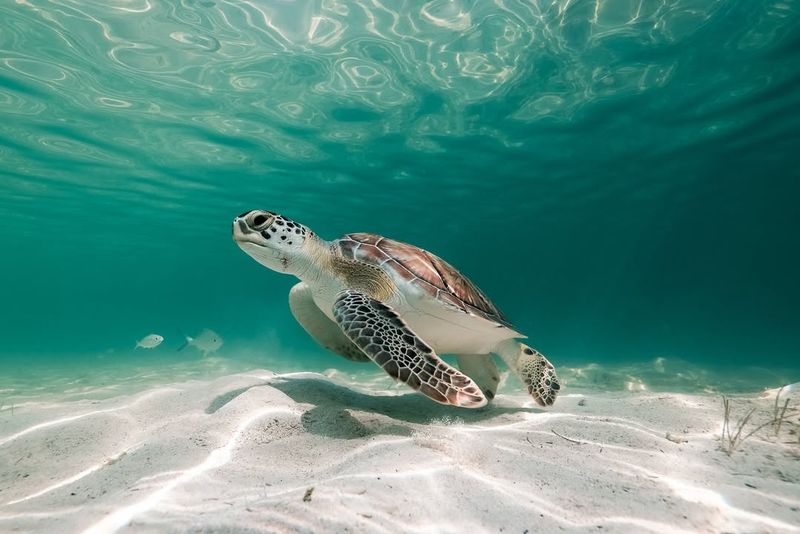
Among the crystal clear waters of Hawaii, the ancient green sea turtle performs a mesmerizing underwater dance. Unlike any traditional movement, their graceful swirls and elegant glides create a ballet-like performance. Witnessing this spectacle feels like viewing a dream painted with the colors of the ocean.
As the turtle maneuvers through the water, its flippers seem to orchestrate the ocean’s symphony. The calmness in its eyes reflects a dance that’s both spontaneous and timeless.
Observers are left in awe, capturing memories rather than mere images, as the turtle waltzes with the waves. Such encounters inspire deep respect for marine life.
Turtle Cleaning Stations
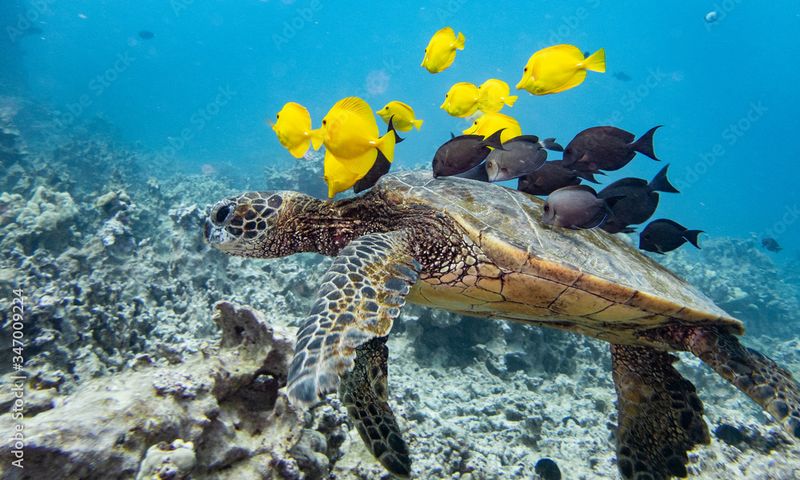
Beneath the Hawaiian waves, turtle cleaning stations become bustling hubs for marine wellness. Here, the honu stop by for a refreshing clean-up by cleaner fish, who meticulously remove parasites and dead skin. This symbiotic relationship fosters a healthy ecosystem, ensuring the turtles remain vibrant and healthy.
These stations are vital for the honu’s well-being, allowing them to thrive in their natural habitat. The sight of fish flitting around these majestic creatures is a vivid reminder of nature’s intricate balance at work. Visitors diving in can witness this underwater camaraderie firsthand, a unique spectacle of marine life harmony.
Turtle Sunbathing Rituals
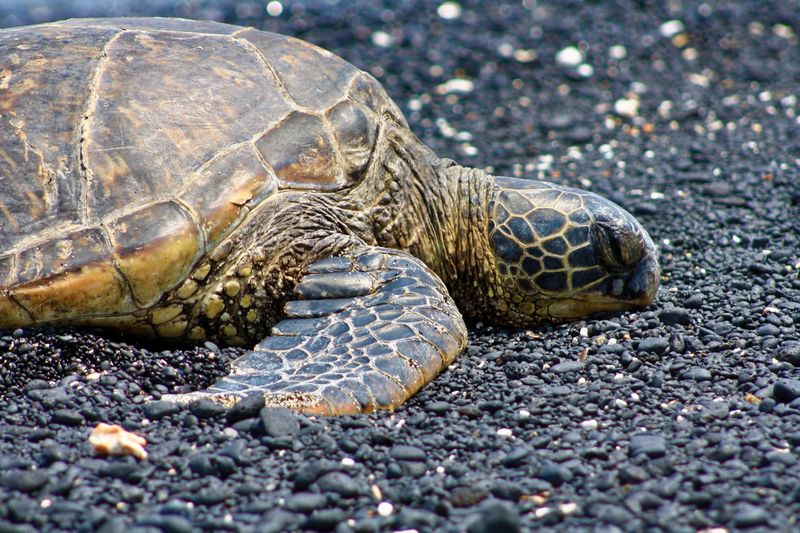
On sunny Hawaiian shores, green sea turtles engage in their cherished sunbathing rituals. Emerging from the sea, they clamber onto sandy beaches to bask in the warm rays, absorbing essential heat and energy.
This sun-soaked indulgence not only regulates their body temperature but also aids in boosting their metabolism. The turtles’ serene repose, coupled with the rhythmic sounds of the ocean, creates a picturesque scene that embodies tranquility.
For beachgoers, spotting these graceful creatures resting is a rare glimpse into the peaceful lives of Hawaii’s ancient mariners, harmonizing with the natural elements around them.


